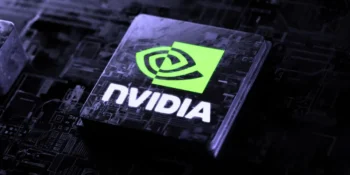The Raspberry Pi, a credit-card-sized Single-Board Computer (SBC) developed by the Raspberry Pi Foundation, has been a game-changer in education and computing. Since its introduction in 2012, the SBC has democratized access to technology, making computing more affordable and accessible to students, educators, and hobbyists worldwide. Its combination of low-cost, open-source software and powerful capabilities has opened up new opportunities for learning, innovation, and digital literacy.
The Raspberry Pi’s journey from a simple educational tool to a global phenomenon is a testament to the power of open-source hardware and the impact that accessible technology can have on education. This case study explores how the Raspberry Pi has transformed computing education, its role in bridging the digital divide, and its broader implications for technology innovation.
Background of Raspberry Pi
The Raspberry Pi Foundation, a UK-based charity, was founded in 2009 to promote the study of computer science and basic computer programming in schools. The Foundation aimed to address the decline of practical computing skills among students, exacerbated by the increasing use of closed, proprietary technology in education. The SBC was conceived as a low-cost, easy-to-use, open-source computer designed to provide students with hands-on experience in computing, programming, and electronics.
The first Raspberry Pi model was launched in 2012 at $25 (for the Model A) and $35 (for the Model B). This price was significantly lower than most personal computers at the time, making it an attractive option for schools, universities, and individuals with limited resources. The SBC was built with a simple philosophy: to create an affordable computer that could help teach the fundamentals of computing, programming, and problem-solving.
The Design and Features of the Raspberry Pi
A single-board computer, meaning all its components—processor, memory, input/output ports, and more—are integrated into a tiny circuit board. Key features of the Raspberry Pi include:
- Low Cost: The Raspberry Pi’s most notable feature is its low price, initially set at $25 and later expanded to different versions at varying prices. This made it an affordable option for individuals, schools, and institutions with limited budgets.
- Compact Size: The SBC’s small form factor made it easy to deploy in various settings, from classrooms to maker spaces. Its portability allowed it to be used in various educational environments.
- Expandable: The Raspberry Pi is highly customizable, with various accessories and add-ons available. These include sensors, cameras, displays, and sensors, enabling students to experiment with various hardware components.
- Open Source: The SBC runs on open-source software, primarily Linux-based operating systems like Raspbian. This open-source nature allowed educators and students to freely access and modify the software to suit their needs, promoting a deeper understanding of how computers work.
Democratizing Computing Education
One of the primary goals of the Raspberry Pi was to democratize access to computing education. Before its launch, computers were often prohibitively expensive for schools in underfunded districts, making it difficult for students in those areas to gain hands-on experience with technology. The SBC changed that by providing an affordable and accessible platform for learning.
Access to Technology for All
The Raspberry Pi’s low price meant that schools, especially those in developing countries or low-income areas, could afford to purchase large quantities of devices. This allowed students to use a computer for learning, coding, and experimenting. For many students, the SBC represented their first introduction to computing, helping to level the playing field and offering previously unavailable educational opportunities.
- Global Reach: The Raspberry Pi’s affordability meant it was not limited to wealthy countries or well-funded schools. The device was introduced to schools in the UK, the United States, sub-Saharan Africa, and other regions where technology access was previously limited.
- Impact on Developing Countries: In many developing countries, the SBC has been used to create computer labs in schools, providing students access to digital literacy tools. NGOs and local initiatives have also used Raspberry Pi devices to establish community tech hubs where children and adults can learn programming and computing skills.
Teaching Programming and Computer Science
The Raspberry Pi was designed to make learning programming and computational thinking easy. Its affordability, flexibility, and open-source software have made it an ideal tool for teaching computer science concepts.
- Learning to Code: The SBC includes various programming tools, including Python, Scratch, and others, which help students learn programming languages early. Through these tools, students can build basic programs and games and even control hardware components like sensors and motors, all of which foster an understanding of the core principles of computer science.
- Hands-On Learning: The Raspberry Pi’s integration with hardware allowed students to experiment with circuits, sensors, and other physical computing projects. This hands-on approach to learning helped bridge the gap between abstract programming concepts and real-world applications, which was critical in making computer science tangible and engaging for students.
- Encouraging Creativity: The SBC’s customizable nature encouraged students to develop their projects, from simple games to interactive displays and even robots. This creativity fostered innovation and allowed students to see the practical impact of their learning.
Bridging the Digital Divide
In addition to its impact on education, the Raspberry Pi has played a significant role in bridging the digital divide. Providing affordable computing devices has allowed individuals from all walks of life to participate in the digital economy and gain essential tech skills. This is particularly important in areas where access to technology is limited or non-existent.
Providing Tools for Digital Literacy
The SBC has become a valuable tool in teaching digital literacy, which is increasingly essential in today’s technology-driven world. Digital literacy encompasses many skills, including basic computer operations, internet usage, coding, and more. Through initiatives like coding clubs, after-school programs, and online tutorials, the Raspberry Pi has made it easier for students to acquire these skills.
- Increased Tech Skills in Underserved Communities: The SBC has been used to teach coding and other digital skills in underserved communities, including remote and rural areas. The device’s low cost means schools, libraries, and community centers can offer computer programming and digital literacy classes without breaking their budgets.
- Access to Online Resources: The Raspberry Pi has helped individuals access educational resources online, from coding tutorials to academic courses and digital libraries. In many places, the internet is the primary source of information and learning, and the solution provides a gateway to these resources.
Promoting Inclusivity and Empowerment
By providing a cheap and accessible computer platform, the Raspberry Pi has empowered many marginalized groups, particularly women and minorities, to enter the world of technology. In many countries, there has been an effort to close the gender gap in tech and encourage more female students to pursue STEM (Science, Technology, Engineering, and Math) subjects. The SBC’s affordable nature and appeal have helped to make technology more inclusive.
- Women in Technology: Programs that empower girls and young women to get involved in technology have used Raspberry Pi to teach coding and digital skills. These programs aim to combat stereotypes and create more opportunities for women in the male-dominated tech industry.
- Community Engagement: The Raspberry Pi has also been used in community-driven initiatives that bring people together to solve problems, whether creating local energy access solutions or building devices that serve specific community needs. This sense of community and collaboration has made the Raspberry Pi a tool for social good.
Maker Movement and Innovation
The SBC has also become a vital tool in the maker movement, a global community focused on creating, building, and hacking technology. The maker movement encourages hands-on learning, experimentation, and innovation, and the Raspberry Pi has been central to these activities.
Enabling DIY Projects and Prototyping
The Raspberry Pi’s open-source design and versatility are ideal for DIY (Do-It-Yourself) projects. Makers and hobbyists use SBCs to create everything from home automation systems to digital art installations. It has also become a popular tool for prototyping new technologies, helping inventors quickly build and test ideas.
- Prototyping Tools for Entrepreneurs: Entrepreneurs have used the Raspberry Pi to build prototypes of their products. Whether it’s a smart device, an educational tool, or a robotics project, the Raspberry Pi has allowed individuals to bring their ideas to life without requiring expensive equipment.
- Maker Fairs and Hackathons: Raspberry Pi has played a significant role in maker fairs and hackathons, where participants create innovative solutions to technical challenges. These events foster creativity and collaboration while encouraging the development of new technologies.
Impact on Industry and Research
Beyond education and the maker community, the Raspberry Pi has found applications in industry and research. Many organizations use Raspberry Pi devices to build low-cost embedded systems, sensors, and other devices in fields such as automation, healthcare, and environmental monitoring.
Challenges and Future Prospects
While the Raspberry Pi has achieved tremendous success, it faces ongoing challenges. One of the biggest challenges is keeping up with rapid technological advancements, particularly in faster processors, more advanced software, and the increasing demand for mobile and cloud-based solutions.
Competition and Technological Advancements
As more competitors enter the low-cost computing market, Raspberry Pi must continue to innovate to maintain its leadership position. However, its community-driven development model ensures that new features, capabilities, and applications are consistently added to keep the platform relevant.
Sustainability and Long-Term Impact
Looking ahead, the Raspberry Pi’s long-term impact on education and technology will depend on how effectively it can continue democratizing access to computing. The Raspberry Pi Foundation’s commitment to creating affordable and accessible technology will likely shape the next generation of tech leaders and innovators.
Conclusion
The introduction of the Raspberry Pi marked a pivotal moment in education, computing, and technology. By making computers affordable, accessible, and open-source, the SBC has transformed how we approach learning, digital literacy, and technological innovation. It has democratized computing for students and individuals worldwide, enabling them to acquire essential skills and participate in the digital economy.
Through its continued evolution, the Raspberry Pi is not just an educational tool but also a catalyst for innovation. As it remains central to the maker movement, the digital inclusion agenda, and the ongoing push for STEM education, Raspberry Pi’s influence will continue to resonate across generations, shaping the future of technology and education.












